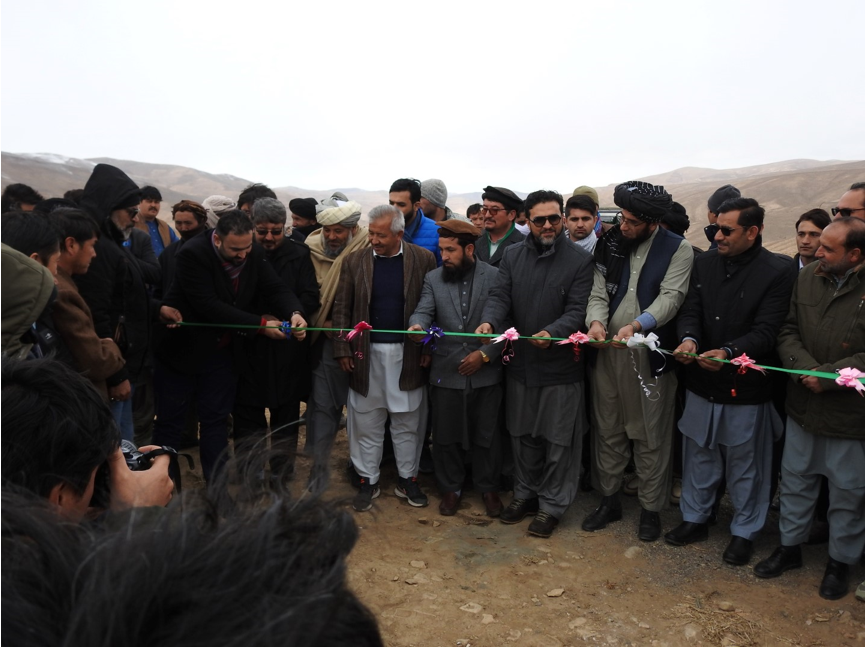- Afghanistan established its fifth national park last year, the massive Bamyan Plateau Protected Area.
- The site is home to the Persian leopard and ibex, and serves as a key breeding ground for the endemic Afghan snowfinch.
- Local inhabitants were crucial to developing the park and are set to have a voice in its management.
- In addition to conserving the landscape and its plants and wildlife, the protected area is expected to boost tourism and local livelihoods, and serve as a natural respite for a country weary of war.
Ibrahim Abrar’s first visit to Afghanistan’s Bamyan province, where he encountered the Dar-e-Bozurk, or Grand Canyon, is an experience he says he’ll never forget.
He describes it as “a vast emptiness of gigantic and deep canyons, pristine rangeland, and rather intimidating dignified, old juniper trees.”
In November 2019, more than a decade after that first encounter, Abrar, now a project manager with the Wildlife Conservation Society’s (WCS) Afghanistan program, returned with government officials to announce the establishment of the Bamyan Plateau Protected Area. Only the fifth protected area in Afghanistan, and the second-biggest at 4,200 square kilometers (1,600 square miles), roughly the size of the U.S. state of Rhode Island, it’s a landscape rich with ecological, social and cultural significance.
Work on the Bamyan protected area began in 2006 after biological surveys revealed an abundance of rare wildlife and undisturbed habitat. Over the following decade, WCS Afghanistan worked closely with local officials, scientists and communities to coordinate funding and ecological monitoring.


“In this area, the long and intertwined histories of wildlife and human inhabitants have preserved a rich and spectacular biological and cultural landscape,” says John Robinson, the WCS chief conservation officer and executive vice president of conservation and science.
The wildlife found in Bamyan include the ibex (Capra sibirica), urial (Ovis orientalis) and the Persian leopard (Panthera pardus tulliana), an endangered species.
“The healthy rangeland, presence of significant and rare wildlife and important sources of water are the main reasons we are working [with] the government to protect the area,” Abrar says. He adds the Bamyan Plateau is also home to animal species found nowhere else in Afghanistan, including the southwest Eurasian badger (Meles canescens) and the boreal owl (Aegolius funereus).
The landscape is also significant for bird conservation, serving as an important breeding ground for the endemic Afghan snowfinch (Pyrgilauda theresae), Abrar says.


The impact of establishing the Bamyan Plateau Protected Area may extend beyond wildlife conservation, potentially providing benefits to local communities as well as Afghanistan as a whole, its proponents say. This is due in part to environmental law in Afghanistan, which requires that local communities be directly involved in the planning of protected areas and able to benefit from their establishment and operation.
“By talking with the local people one can feel how [important] natural resources and plant diversity are for [them],” says Abrar, who notes that the traditional way of life for many locals depends on the Bamyan’s Plateau ample natural resources.

Abrar says Afghanistan’s protected areas also hold the potential to help the country move past a prolonged era of war and conflict.
“The new declared national parks and protected areas can play a key role in provision of a environment and recreation opportunities for Afghan people to be far from the daily pressures and spend happy moments in the nature with friends and families,” he says. He cites the example of the country’s first protected area, Band-e-Amire, which today attracts 200,000 tourists each year from across Afghanistan.
Protected areas also provide a way for other nations to see Afghanistan in a new light, Abrar says.
“The Bamyan Plateau is relatively huge natural landscape with very beautiful scenery which is suitable area for tracking and camping. As the area becomes known to national and international tourists it will be an important destination for those who love nature,” he says.

Much work still remains, Abrar says. Wildlife in the park is currently imperiled by poaching and overgrazing by outsiders. But the declaration of Bamyan as a protected area has created a groundswell of support from local people to collaborate with the government and international NGOs on future management efforts.
“We are proud that years of intervention and completing the studies/surveys and giving awareness to the people produced pleasant [outcomes],” Abrar says. “This will be an important step for more conservation and support the management of the area.”
